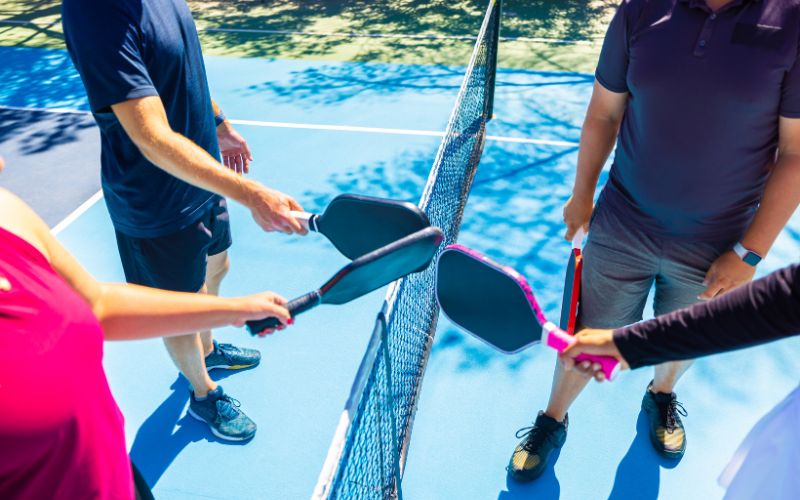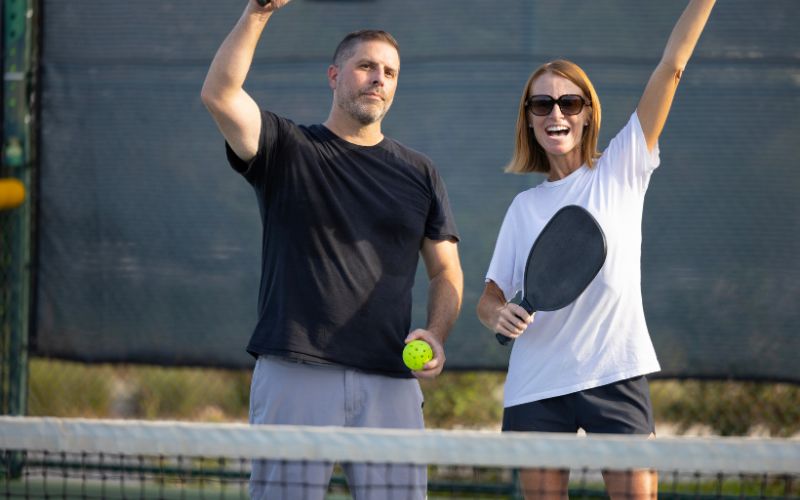Pickleball, a game that combines elements of tennis, badminton, and table tennis, has gained immense popularity in recent years. Amidst the fast-paced rallies and strategic play, the concept of a “let serve” holds significance in the game. Let’s delve deeper into what constitutes a let serve in pickleball and its implications on the gameplay.
The Basics of the Let Serve
In the realm of pickleball, a let serve occurs when the server’s serve hits the net and lands in the proper service court. According to pickleball official rules, this situation warrants a do-over or another serve attempt. However, it’s crucial to note that a let serve is only recognized if the serve hits the net but lands in the correct service court.
Why is it referred to as a “let”? Let’s explore the etymology of the term “let.” Here are several hypotheses surrounding its origin:
The term “let” is adopted from tennis, where it also signifies a serve hitting the net and necessitating a replay. Certain individuals theorize that “let” originates from the expression “let it play,” indicating permission to continue the game. An alternative hypothesis suggests that “let” is an abbreviated form of the French term “filet,” denoting “net.” Lastly, some propose its derivation from the Old Saxon word “lettian,” conveying the meaning of “to hinder.”
Key Components of a Let Serve
The concept of a let serve involves several critical aspects, including the correct service court and the double bounce rule. When serving in pickleball, the server must ensure the ball lands in the opponent’s court diagonally from the service area, adhering to the non volley zone guidelines.
Implications on the Serving Team and Opposing Team
Understanding the dynamics of a let serve is essential for both the serving team and the opposing team. For the serving team, a let serve results in only one serve attempt per turn. Conversely, for the opposing team, it grants them an opportunity to receive a re-served ball due to the net interference during the serve.
What should you do if a serve hits the net?
As discussed, you’re required to return any serve that hits the net and lands in the correct service box. The service box is the area in front of the baseline, between the centerline and sideline (but behind the non-volley zone line).
A lot of things can occur when a ball hits the net. It may lose speed and drop short, or it might change direction completely. So, you should always be prepared to act quickly.
Focus on proper footwork to move around the court effectively. With practice, you’ll be able to return serves – even serves that hit the net – with confidence and consistency.
Navigating the Non Volley Zone Line and Correct Serve Contact
In pickleball, players are required to maintain a strategic position within the non volley zone, commonly referred to as the “kitchen.” When executing a serve, players must ensure that at least one foot remains behind the non volley zone line until the ball is returned by the opposing team.
Let Serve and Its Impact on Score Points
A let serve can significantly influence the serving team’s score. In a scenario where the server continues serving successfully, a let serve could potentially disrupt the service sequence, altering the flow of scoring points.
Common Let Serve Scenarios and Its Resolution
Let serves can occur due to various reasons, including the serve hitting the net or not reaching the opponent’s court. According to pickleball rules, in case of a let serve, the server loses the serve attempt but retains the opportunity to serve again.
In conclusion, understanding what constitutes a let serve in pickleball is fundamental for players adhering to the game’s regulations. It involves aspects such as serve and volley advantage, correct service court, and non volley zone, all of which play a pivotal role in maintaining the game’s integrity and fair play.
Pickleball’s intricacies, including the let serve concept, add depth to the sport and contribute to its growing popularity within the pickleball community worldwide.
Frequently Asked Questions
1. What exactly is a let serve in pickleball?
A let serve occurs in pickleball when the server’s serve hits the net but still lands in the proper service court. According to the official rules, this situation calls for a do-over or another attempt at serving. However, it’s crucial to note that a let serve is only recognized if the serve hits the net and lands in the correct service court.
2. Why is it called a “let”? Where does the term originate from?
The term “let” has various proposed origins. Some theories suggest its adoption from tennis, where it also signifies a serve hitting the net and requiring a replay. Another hypothesis links it to the French term “filet,” meaning “net,” or from the Old Saxon word “lettian,” conveying the meaning of “to hinder.”
3. How does a let serve impact the serving team and the opposing team? For the serving team, a let serve results in only one serve attempt per turn. Conversely, for the opposing team, it grants them an opportunity to receive a re-served ball due to the net interference during the serve.
4. What should a player do if a serve hits the net during a game?
As per the rules, a player should return any serve that hits the net and lands in the correct service box. Since the ball’s trajectory might change, quick reactions and proper footwork are crucial to effectively return the serve, ensuring the game continues smoothly.
5. How does a let serve impact scoring points in pickleball?
A let serve could potentially disrupt the service sequence for the serving team, affecting the flow of scoring points. If the server continues serving successfully, a let serve might lead to a shift in momentum and strategy during the game.





